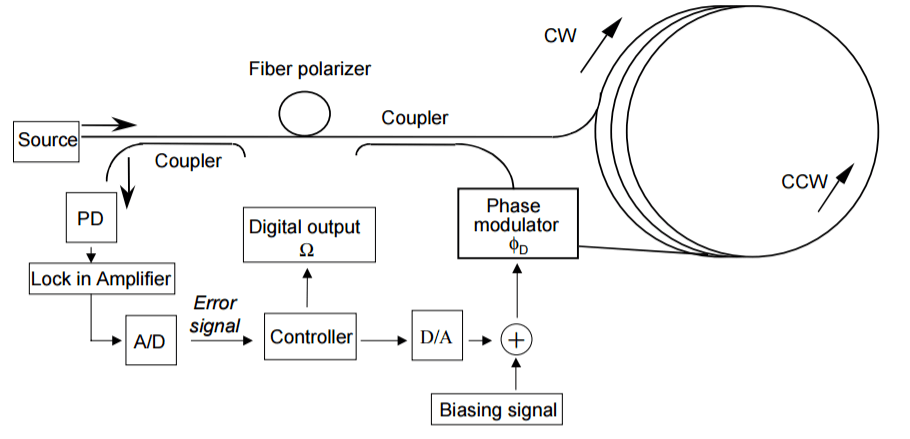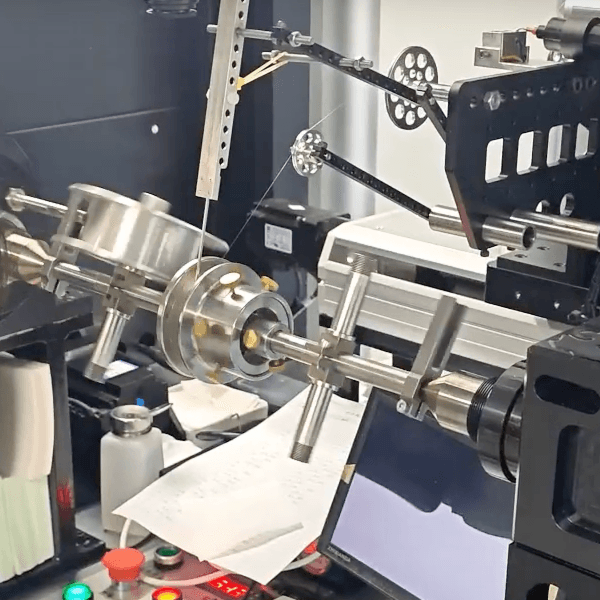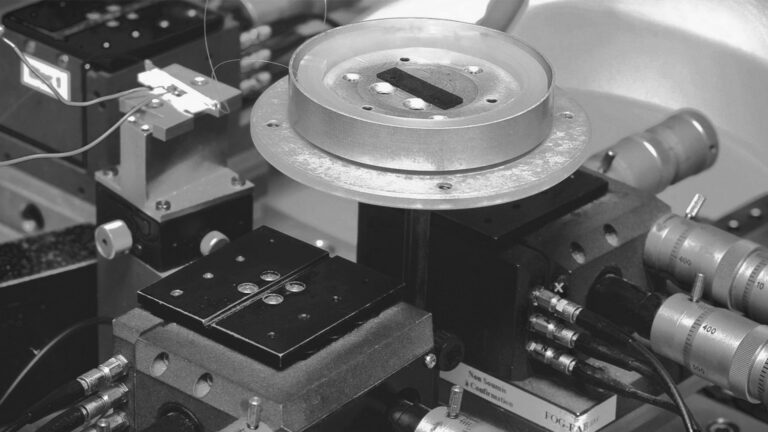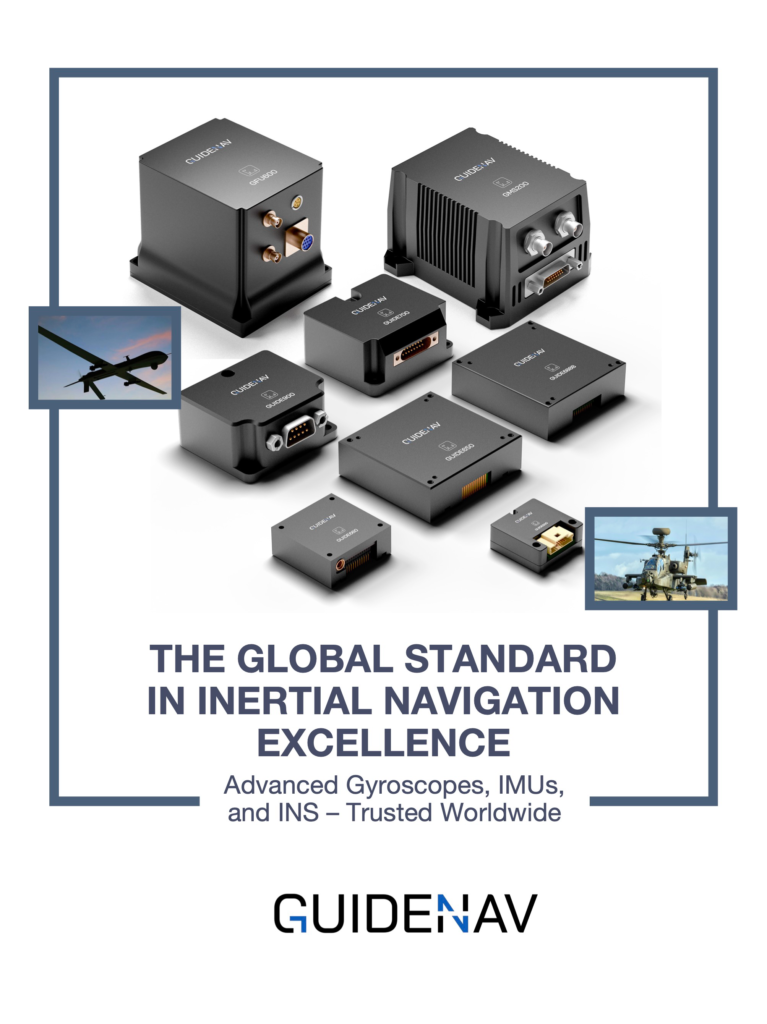When GPS is weak or unavailable, navigation depends on gyroscopes. But here’s the challenge: choose a system that’s too simple, and errors grow quickly; choose one that’s too advanced, and costs rise sharply. Fiber optic gyroscopes (FOGs) solve this dilemma, available in two forms—open-loop and closed-loop—each serving different mission needs.
Open-loop FOGs are compact and cost-effective, with medium accuracy (1–10 °/h) for UAVs and robots. Closed-loop FOGs deliver ultra-high precision (0.001–0.1 °/h), making them essential in submarines, missiles, and aerospace systems.
Each has its own strengths, trade-offs, and typical use cases, from UAVs and industrial robots to submarines and spacecraft. Understanding these differences makes it easier to match the right technology to the mission.
Table of contents
How Fiber Optic Gyroscopes Work?
Think of two runners racing in opposite directions around a track. If the track itself starts turning, one runner will take a little longer to finish, while the other is faster. That difference reveals the rotation.
A fiber optic gyroscope (FOG) works the same way—except with light beams instead of runners. Light travels in opposite directions through a coil of optical fiber. When the device rotates, one beam takes a slightly longer path. By measuring this, the FOG can detect even the smallest movements.
Because it uses light and has no moving parts, a FOG is highly reliable, durable, and maintenance-free—making it ideal for drones, submarines, and aerospace systems.
What Is an Open-Loop Fiber Optic Gyroscope (O-FOG)?

An open-loop FOG reads the light intensity difference directly from the interference pattern. The design is simple and cost-effective, but its response is slightly nonlinear, which limits precision at higher rotation speeds.
In real terms, an O-FOG typically achieves a bias stability of 1–10 °/h. That makes it accurate enough for drones, robots, ground vehicles, and industrial systems, where missions are short and cost and power efficiency matter more than ultimate precision.
Advantages of O-FOG:
- Lower costcompared to closed-loop designs
- Smaller sizeand simpler electronics
- Lower power consumption, ideal for UAVs and portable systems
- Sufficient accuracyfor tactical or industrial applications
What Is a Closed-Loop Fiber Optic Gyroscope (C-FOG)?

A closed-loop FOG uses an advanced technique: instead of reading the light intensity directly, it applies a feedback signal to keep the interferometer at its most sensitive point. This method linearizes the output, giving much higher accuracy and allowing the system to handle very high rotation rates without distortion.
In practical terms, a C-FOG can reach bias stabilities as low as 0.001–0.1 °/h, making it the choice for submarines, missiles, fighter jets, and spacecraft, where even the smallest error could lead to mission failure.
Advantages of C-FOG:
- Ultra-high accuracysuitable for navigation-grade and strategic-grade missions
- Wide dynamic range, stable at both low and high angular speeds
- Excellent temperature stability, performing reliably in extreme conditions
- Trusted in defense, aerospace, and geodesyfor long-duration, GNSS-denied navigation
Which One Is More Accurate?
Open-Loop FOG (O-FOG):
Open-loop systems provide medium accuracy, usually with a bias stability of 1–10 °/h. This level is acceptable for drones, robots, and ground vehicles, especially if they can receive frequent GNSS updates. However, over long periods without correction, the drift accumulates quickly, limiting their use in high-precision missions.
Closed-Loop FOG (C-FOG):
Closed-loop systems achieve navigation-grade accuracy, with bias stability as low as 0.001–0.1 °/h. Thanks to their feedback design, they remain linear and stable over time. This allows submarines, missiles, and spacecraft to navigate for days or even weeks without GNSS signals, where even a small error would be unacceptable.
| Feature | Open-Loop FOG (O-FOG) | Closed-Loop FOG (C-FOG) |
|---|---|---|
| Bias Stability | 1–10 °/h | 0.001–0.1 °/h |
| Error Growth | Noticeable in hours | Negligible in days/weeks |
Which One Handles Extreme Motion Better?
Open-Loop FOG (O-FOG):
Open-loop gyros are limited when the platform rotates quickly. Because their output curve is nonlinear, they can saturate at high angular speeds, meaning accuracy drops sharply. This makes them less suitable for fast aircraft, missiles, or high-dynamic vehicles.
Closed-Loop FOG (C-FOG):
Closed-loop designs use feedback to keep the interferometer locked at its most sensitive point. As a result, they maintain linear performance across a very wide dynamic range—from extremely slow rotations to rapid maneuvers. This capability makes them the standard for missiles, fighter jets, and spacecraft, where extreme motion is common.
| Feature | O-FOG | C-FOG |
|---|---|---|
| Dynamic Range | Limited, saturates at high speed | Very wide, stays linear |
| High-Speed Motion | Accuracy drops | Stable performance |

Which One Is More Reliable in Harsh Environments?
Open-Loop FOG (O-FOG):
Open-loop gyros can work well in stable conditions, but they are more sensitive to temperature changes and vibrations. In desert heat or arctic cold, their readings may drift unless additional compensation algorithms are used. This makes them less reliable for long missions in unpredictable environments.
Closed-Loop FOG (C-FOG):
Closed-loop gyros are built to handle extreme environments. Their feedback design naturally reduces the impact of temperature shifts, and most C-FOGs are qualified under MIL-STD standards (-40 °C to +85 °C). Whether on a submarine, in a fighter jet, or in space, they deliver consistent performance without needing heavy software correction.
| Feature | O-FOG | C-FOG |
|---|---|---|
| Temperature Stability | Prone to drift | Stable from −40 °C to +85 °C |
| Vibration Resistance | Moderate | High, defense-grade |
What About Size, Power, and Cost?
Open-Loop FOG (O-FOG):
One of the biggest strengths of open-loop gyros is their compact design and efficiency. They use simpler electronics, so the devices are smaller, lighter, and consume less power—sometimes just a few watts per axis. This makes them perfect for UAVs, mobile robots, and other portable platforms where every gram and every watt matters. Their lower price point also makes them attractive for commercial projects and cost-sensitive defense programs.
Closed-Loop FOG (C-FOG):
Closed-loop gyros are larger, more power-hungry, and more expensive due to their complex feedback electronics and high-precision components. A typical C-FOG may consume 5–10 W per axis and cost several times more than an O-FOG. But in return, buyers get unmatched accuracy and reliability, which often justifies the investment in submarines, aircraft, and space systems where mission failure is not an option.
| Feature | O-FOG | C-FOG |
|---|---|---|
| Size & Weight | Smaller, lighter | Larger, more complex |
| Power Consumption | Low (few watts) | Higher (5–10 W/axis) |
| Cost | Affordable | Several times higher |

Where Are O-FOGs and C-FOGs Used?
Open-Loop FOG (O-FOG):
Open-loop gyros are chosen when cost, size, and power efficiency are more important than extreme precision.
- UAVs and drones– provide stable orientation for flight control without adding heavy payload.
- Mobile robots and AGVs– accurate enough for indoor navigation or warehouse automation.
- Industrial systems– used in surveying tools, pipeline inspection, or vehicles that can be corrected with GNSS updates.
Closed-Loop FOG (C-FOG):
Closed-loop gyros dominate in missions where accuracy and reliability decide success or failure.
- Submarines– navigate underwater for weeks with no GPS signals.
- Missiles and rockets– maintain stable guidance under extreme speeds and maneuvers.
- Fighter jets and spacecraft– ensure precise attitude control in defense and space missions.
- Geodesy and mapping– used in surveying equipment where drift must be near zero.
- FOG: High cost but unmatched performance for long-term, critical operations.
- MEMS: Affordable and compact, ideal for small-scale or short missions.
- Verdict: The right choice depends on your platform’s mission profile—FOG for precision, MEMS for flexibility.
Why GuideNav Is the Trusted Choice for FOGs?
Fiber optic gyroscopes have become a cornerstone of modern navigation—trusted in defense, aerospace, maritime, and industrial applications. Buyers no longer need to struggle with choosing between cost, size, or precision. With GuideNav’s full portfolio of FOG solutions, you can count on accuracy, reliability, and proven performance tailored to your mission. From tactical platforms to strategic systems, GuideNav ensures that every project benefits from the right balance of technology and trust.

